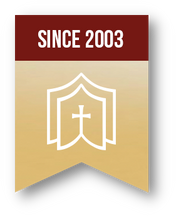Tips & Ideas for Creating Links
With the Blog Partners Program, the more you link to our books, the more opportunities you have to earn rewards. Just as important as having numerous links is having quality links, to encourage your readers to click through. This section will walk you through creating quality links to our products.
If you don’t find an answer to your question here or need more help, email blogpartners@wtsbooks.com.
Creating Links
If your blogging software automates linking:
-
Browse to the page on our website you want to link to. This can be any product or category page. (For example, a Hardcover ESV Study Bible or our study Bibles collection.) Do not link to search results pages.
-
Highlight the URL (web address) of the page and copy it (Ctrl-C on a PC; Cmd-C on a Mac).
-
In your blogging software, highlight the text in your post that you want to make the linked text, then click the link button (often it’s an icon of a chain link).
-
Paste the wtsbooks URL with your unique tracking code to the end of the URL, with no space in between. Your tracking code was given to you in your registration acceptance email. Insert the link in your page or post.
If your blogging software does not automate linking or you want to make your own links in HTML:
-
Find and copy the URL of the page from our website to which you want to link following the instructions above.
-
Open your blog post in your blog’s editor.
-
At the beginning of the text in your post that you want to link to our site, place the following code:
<a href=“wtsbooksURL”>replacing wtsbooksURL with the URL you copied from our site PLUS the tracking code from your registration acceptance email. Please Note: If the URL you copied from our site already contains a "?" then you will need to replace the "?" at the beginning of your unique tracking code with an "&." Only collections and pages on our site (see example) will not have a "?" in the URL. -
At the end of the text serving as the link, place this code:
</a>.
<a href=“https://www.wtsbooks.com/products/gentle-and-lowly-the-heart-of-christ-for-sinners-and-sufferers-9781433566134?variant=31625626550334&utm_source=johndoe&utm_medium=blogpartners">Purchase Gentle and Lowly</a>
Request a Link Check
New Blog Partners: Have us check your first links to make sure they are correct. After you’ve posted your first Blog Partners link, send the URL of your blogpost or page to blogpartners@wtsbooks.com and request a link check. We’ll take a look and let you know if you’re on the right track.
Tips for Effective Linking
- Random or ‘blind’ links scattered across your page will rarely be clicked. It’s better to link to books you are reviewing, recommending, or even just expressing interest in. Readers come to your website because they like and trust your opinion!
- Increase your conversion rate by providing thoughtful reviews. Don't just link to books, tell your readers why you are excited about a particular resource and how it has influenced you.
- Include a cover image of the book. Link the image to our product page.
- Create a recommended books list. Create a page or post on your blog with your favorite titles with links to WTS Books.





